
Table of Contents
A tour description is a way to inform your potential customers about the details of your tours. It is also a way to persuade them to book with you. Overall, it is your opportunity to showcase your unique selling points, highlight the benefits of your tours, and create a memorable impression on your readers.
This article will show you how to write effective tour descriptions that will boost your conversions and sales. We will guide you through the steps for writing a tour description, from choosing the right tone and language to structuring your content and adding a call to action. We will also provide you with an example tour description to use as a reference or inspiration.
If you want to learn how to write tour descriptions that sell, keep reading!
Steps for Writing a Tour Description
Now that you know why tour descriptions are important let’s see how you can write them. Writing a tour description is not as hard as it may seem if you follow some simple steps. Here are the main steps for writing a tour description to attract and convert your readers.
Determine the Purpose of the Tour
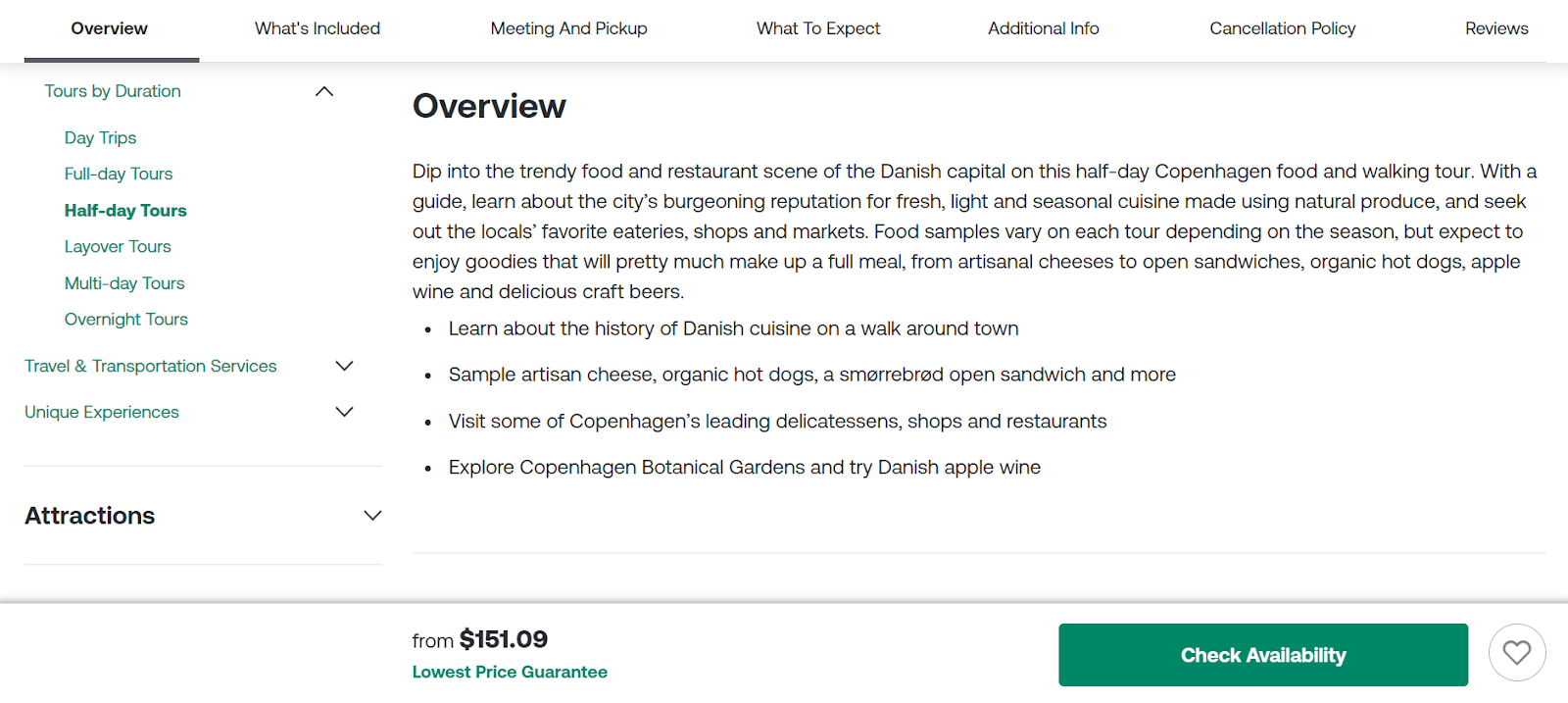
The first step for writing a tour description is to determine the tour’s purpose.
What are the tour’s key features? What makes it unique? What are the main benefits and value propositions of the tour? Why should someone choose your tour over other options? These are some of the questions you must answer before writing.
By defining the tour’s purpose, you can focus on the most relevant and appealing aspects of your tour and avoid unnecessary or boring details.
You will also be able to decide on the target audience for your tour. Who are you writing for? What are their needs, preferences, and expectations? What are their pain points and desires? Knowing your target audience, you can tailor your tour description to their interests and needs and use the right tone and language to connect with them.
Highlight the Tour Itinerary
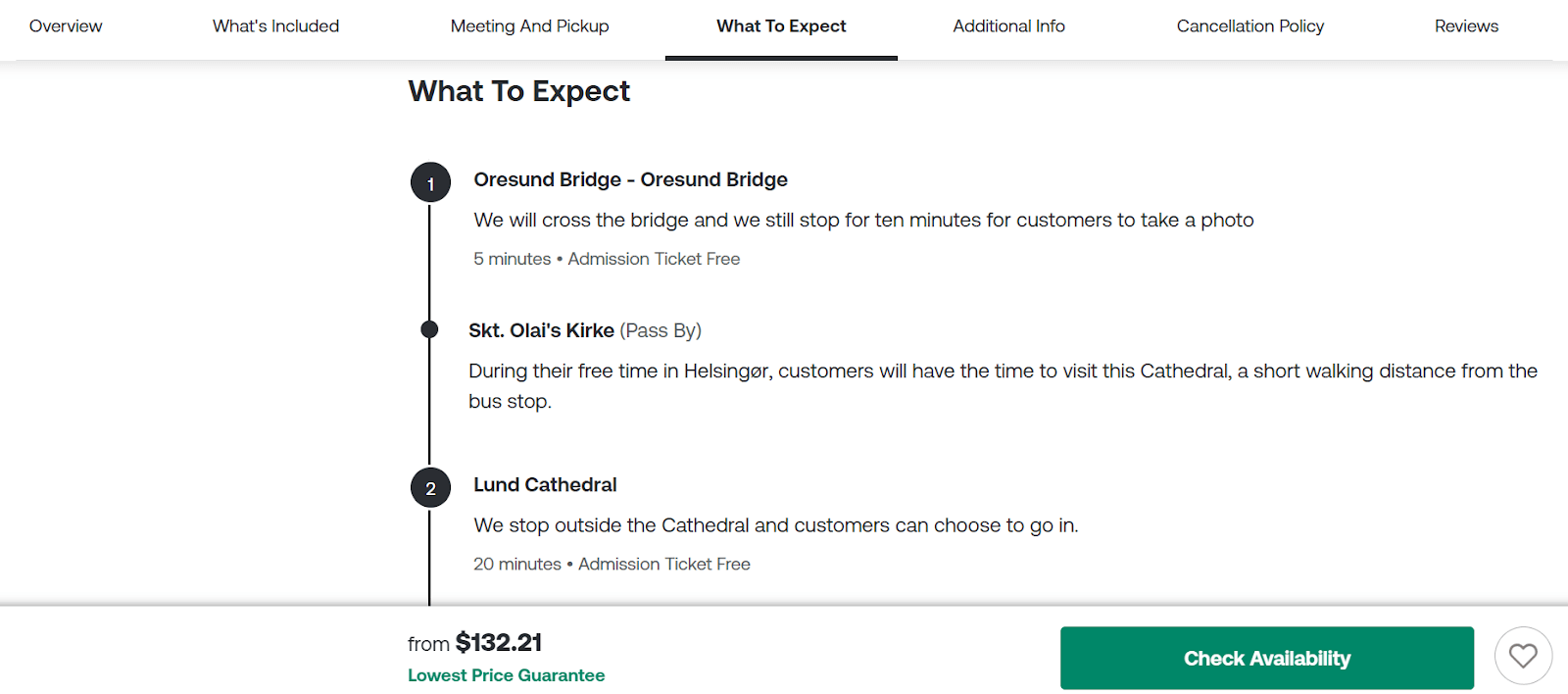
The next step for writing a tour description is highlighting the tour itinerary. This is where you provide an overview of your tour and what your customers can expect. You should list the major stops and attractions included in the tour and provide some brief information about each one.
You should also provide a timeline or schedule for the tour so that your customers can know how long each activity or destination will take. You don’t have to go into too much detail here, as you don’t want to overwhelm or bore your readers with too much information. You just want to give them a glimpse of what they will experience on your tour and spark their curiosity and excitement.
You can also use descriptive words and phrases to make your tour itinerary more vivid and engaging. For example, instead of saying, “Visit the Eiffel Tower”, you can say, “Marvel at the iconic Eiffel Tower and enjoy panoramic views of Paris”. This way, you will create a more emotional connection with your readers and make them imagine themselves on your tour.
Describe the Experience
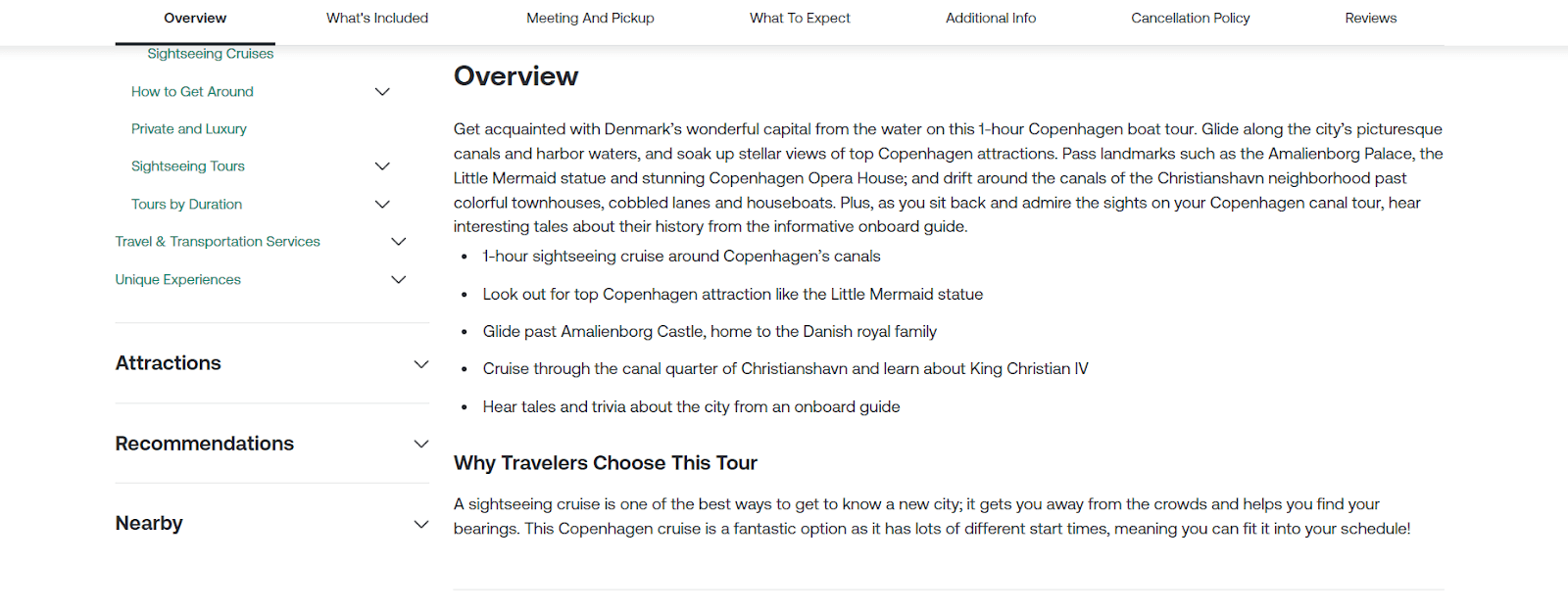
Another step for writing a tour description is to describe the experience of the tour. This is where you use sensory language to describe the tour’s sights, sounds and smells. It will make your readers feel like they are there with you.
You should also include any special activities or experiences unique to your tour. They will show how they will enhance your customers’ enjoyment and satisfaction. For example, suppose your tour includes a wine-tasting session. In that case, you can describe how your customers will savor the flavors and aromas of different wines. And mention learning about the history and culture of wine-making.
By describing the experience of the tour, you will create a more immersive and memorable impression on your readers, and make them want to join your tour.
Share Background and Historical Information
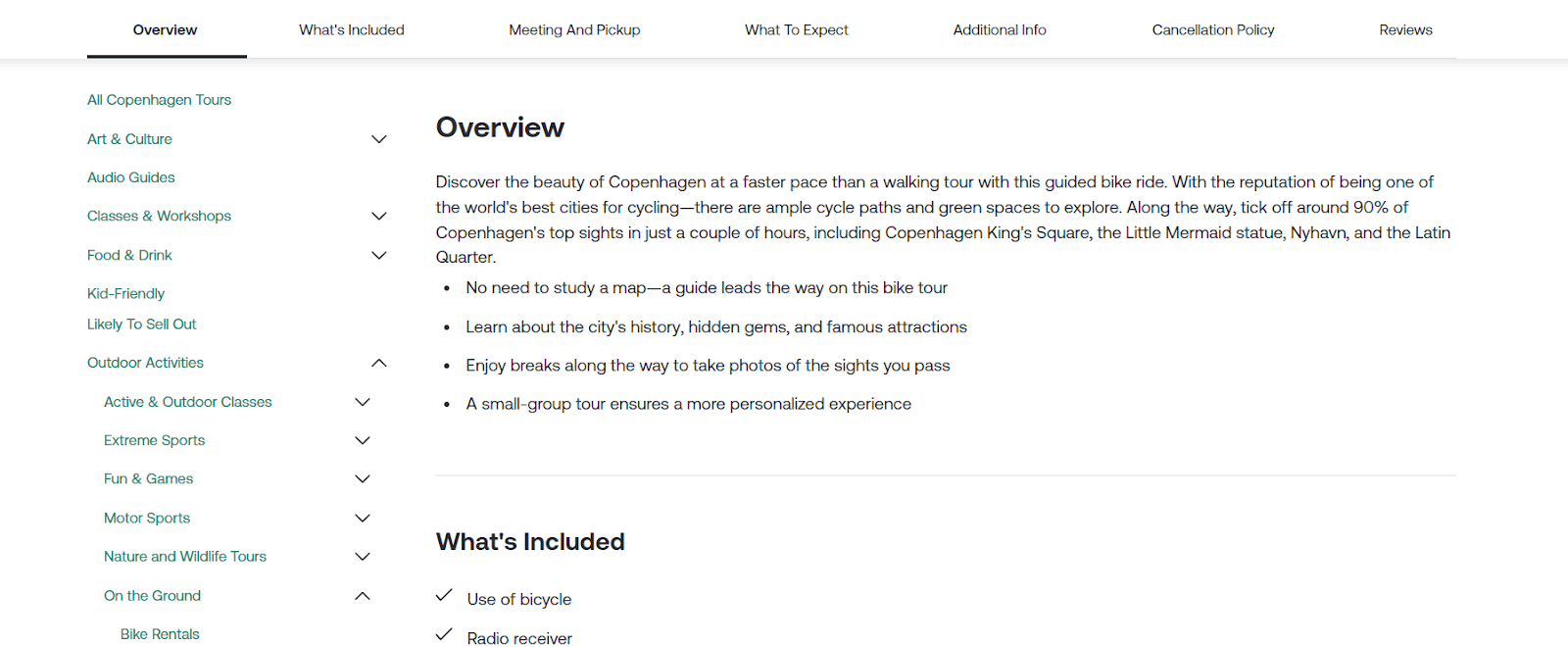
The next step is to share some background and historical information about the destinations visited on the tour. This is where you provide interesting facts or historical background about the places and landmarks you will see on your tour and show how they relate to the theme or purpose of your tour.
You should also use storytelling techniques to engage the reader and make the tour come alive. For example, if your tour is about the French Revolution, you can tell stories about the events and people that shaped the history of France, and how they influenced the architecture and culture of Paris.
By sharing background and historical information, you will add more depth and context to your tour description, making it more informative and educational for your readers.
Use Attention-Grabbing Headlines and Bullet Points
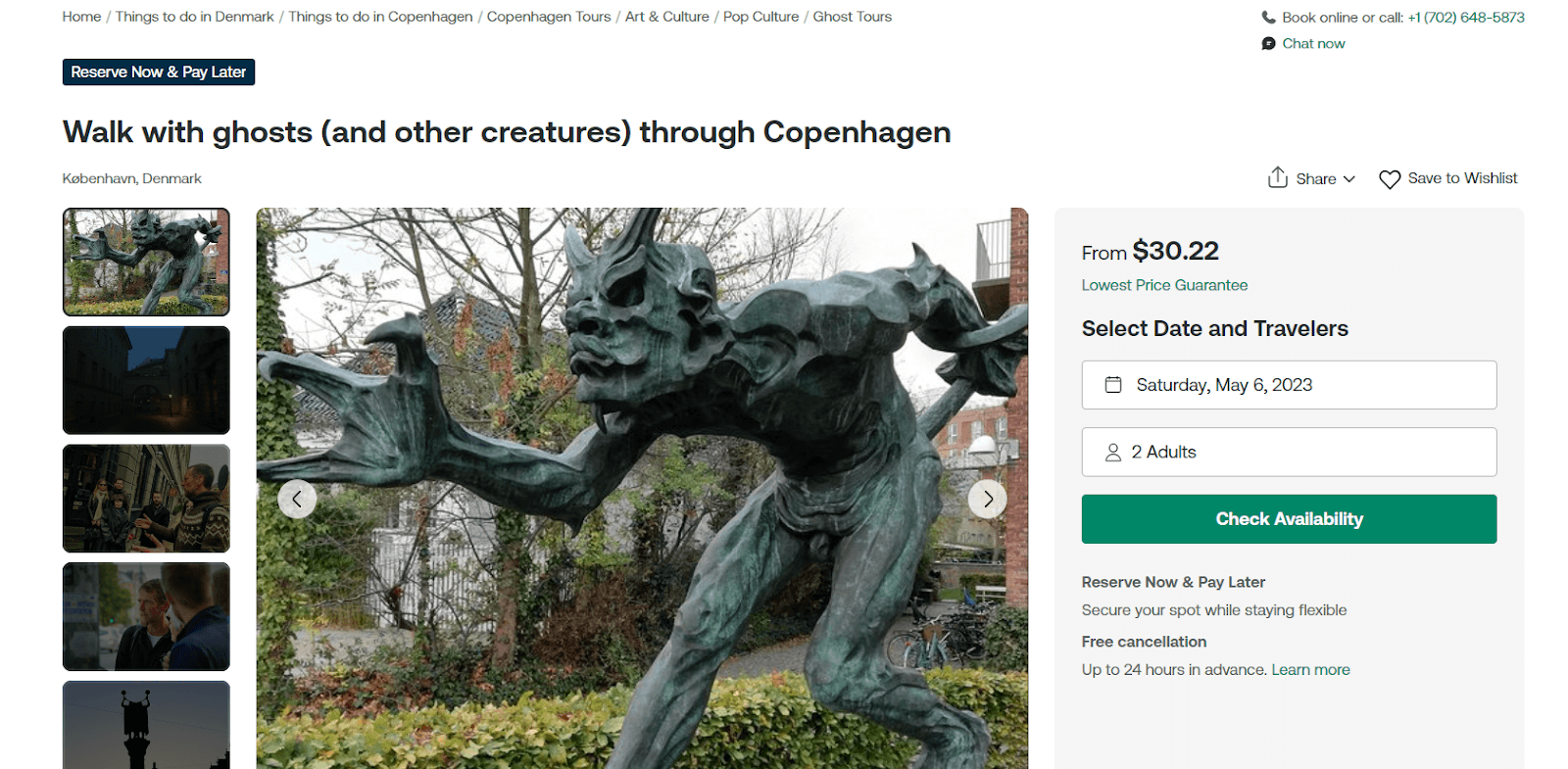
One of the most important steps for writing a tour description is to use attention-grabbing headlines and subheadings to break up the text and make it easier to read. Use headlines and subheadings that capture the main idea or benefit of each section, and make the reader curious and interested to read more.
You should also use bullet points to highlight your tour’s important features or selling points, and make them stand out from the rest of the text. Bullet points are a great way to summarize your tour’s key information and benefits. They will make them more visible and memorable for your readers. For example, you can use bullet points to list your tour’s main attractions, activities, or inclusions and show why they are worth booking.
Add Photos and Videos
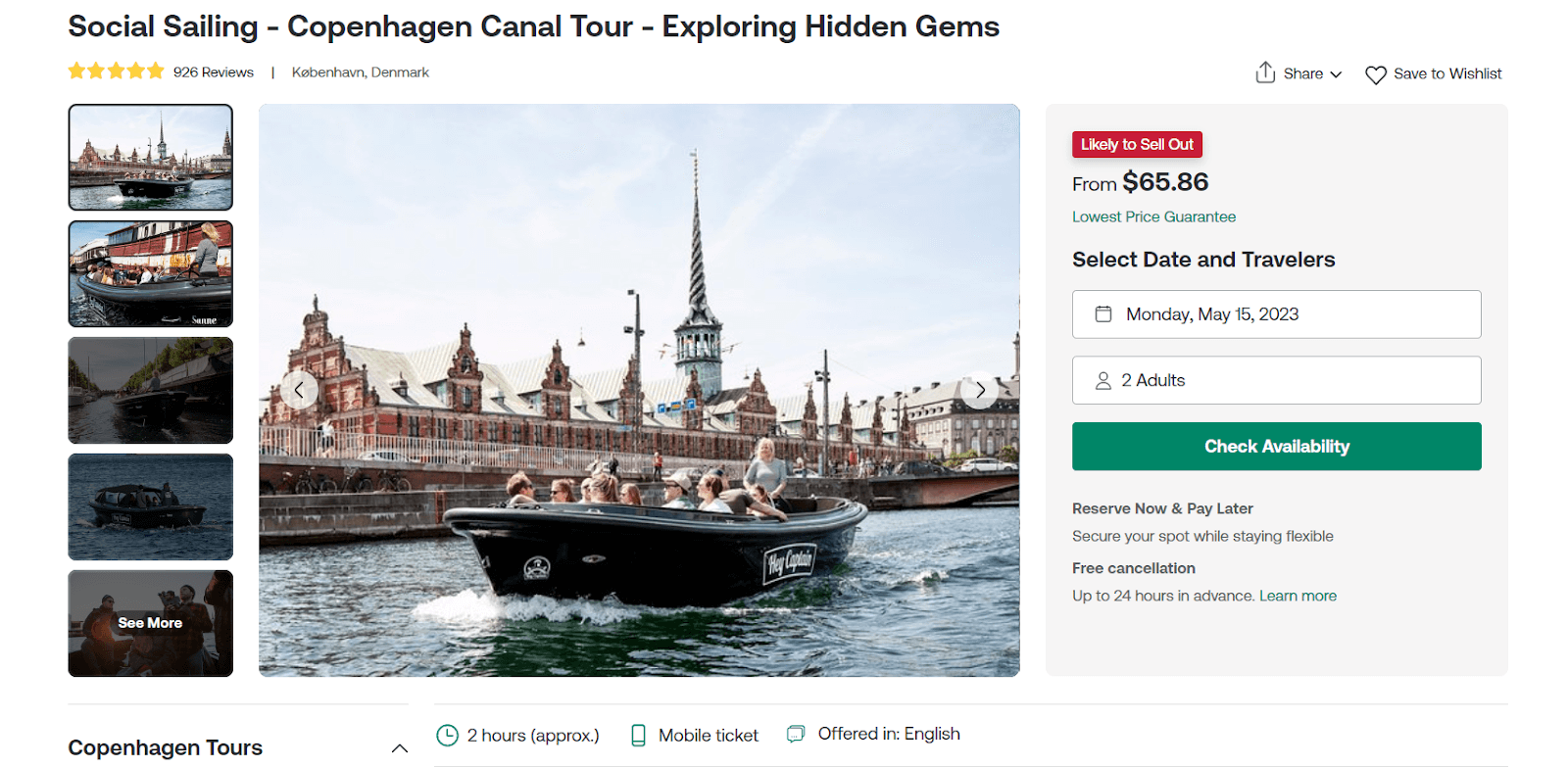
The final crucial step for writing a tour description is to add high-quality photos and videos of the tour destinations and activities. Photos and videos help complement your written descriptions. They will give the reader a better sense of what to expect. They can also help you showcase the beauty and diversity of your tour locations and create a more emotional appeal for your readers.
You should use photos and videos that are relevant, clear, and attractive and that match the tone and style of your tour description. You should also use captions or descriptions to explain what the photos and videos show and how they relate to your tour. Adding photos and videos will make your tour description more visual and engaging and increase your chances of converting your readers into customers.
Are you ready to take your travel website to the next level? Harness the power of SEO and captivate your audience with compelling tour descriptions. Unlock the secrets of effective copywriting and drive more traffic to your website. With the “how to write the tour description” guide, tailored specifically for the TravelerWP WordPress travel theme, you’ll discover expert techniques to optimize your tour descriptions for search engines and entice potential customers.
Don’t miss out on this opportunity to boost your online presence and maximize your bookings. Get your copy now and start crafting irresistible tour descriptions that will make your travel business soar!
Example Tour Description
To help you understand how to write a tour description better, here is an example tour description from Paris City Vision, a leading tour operator in France. The tour description is for a 1-day Big Bus Paris hop-on hop-off tour, allowing you to explore Paris at your own pace and see the city’s main attractions. (For more detail, please open the link to read the full description.)
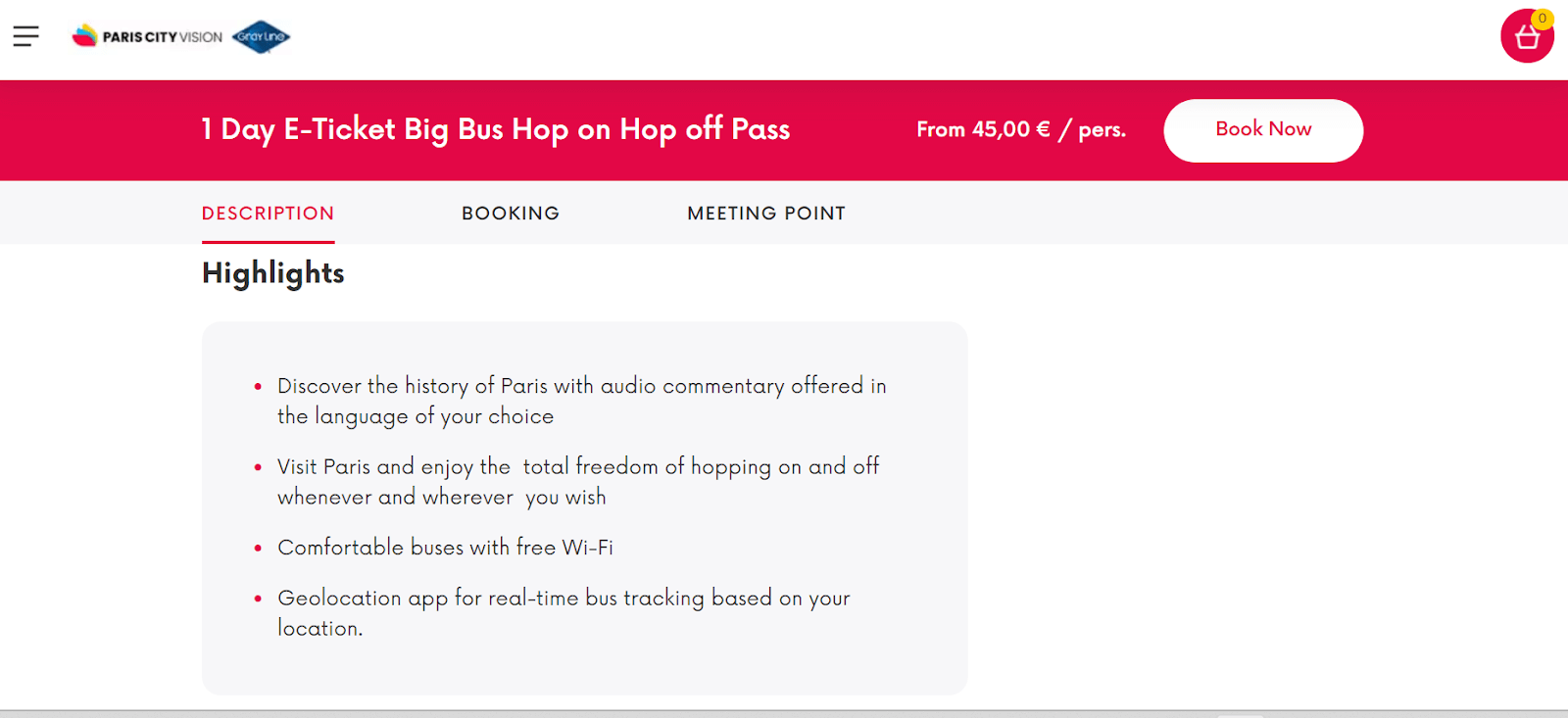
The tour description for the Big Bus Paris 1-day tour is a good example of how to write a tour description that is clear, concise, and informative. It does a great job of using attention-grabbing headlines and bullet points to break up the text. It also highlights the main features and benefits of the tour.
Plus, it has photos and videos of the tour destinations and activities, which make the tour description more visual and engaging. This will give the reader a better sense of what to expect.
However, there are some areas where the tour description could be improved:
1. For example, it could determine the tour’s purpose and decide on the target audience. This would help the tour description to focus on the most relevant and appealing aspects of the tour and use the right tone and language to connect with the reader.
For instance, if the target audience is young travelers who are looking for a fun and flexible way to explore Paris, the tour description could use a more casual and enthusiastic tone. In this case, it should emphasize how the hop-on hop-off tour allows them to customize their itinerary and see the sights they want to see.
2. It could also describe the tour experience and share some background and historical information about the destinations visited on the tour. This would make the tour description more vivid and engaging and create a more emotional appeal for the reader.
For example, it could use sensory language to describe Paris’s sights, sounds, and smells and include interesting facts or stories about the places and landmarks they will see on tour.
3. It could also add a call to action at the end of the tour description, encouraging the reader to book the tour.
For example, it could say, “Don’t miss this opportunity to discover Paris at your own pace and according to your schedule. Book your Big Bus Paris 1-day tour now and prepare for an unforgettable adventure!”
Conclusion
Tour descriptions are powerful instruments to persuade potential tour customers. In this article, we hope you learned how to write effective tour descriptions that attract and convert your readers.
We instructed you on determining your tour’s purpose and target audience, highlighting the tour itinerary, describing the experience, sharing the background and historical information, using attention-grabbing headlines and bullet points, and adding photos and videos. You also saw an example tour description that applied these steps, and an analysis of how it could be improved.
By following these steps, you can write tour descriptions that sell, and boost your conversions and sales. Thank you for reading this article, and happy writing!
